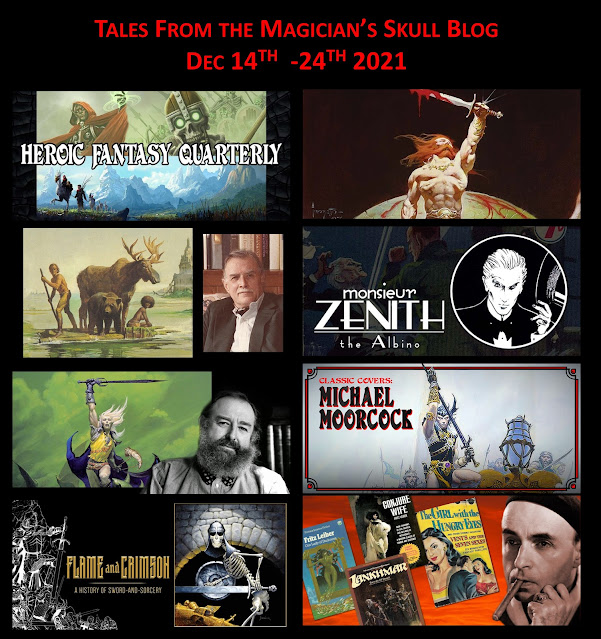Dec
27: Appendix N Archaeology: Clark Ashton Smith by Michael
Curtis
Gamers often point to Appendix N and decry the absence of a
particular author (or three, or seven, or…), declaring Gygax’s omission of them
to be a literary crime of some sort. Putting aside the unbelievable idea that
gamers may complain about things for the moment, we must realize that Appendix
N is not a list one can argue with. It is a catalog of all the literary
influences Gygax chose to recognize as wellsprings from which Dungeons
& Dragons flowed. Since it is representative of one man’s work, we
can’t claim he made the error of excluding a particular author, even if we
believe we can see their influence in the final product. Game design, like art,
is a subjective process and one tends to see what one is inclined to see.
Dec
28: The Self-Made Mind: The Art of Clark Ashton Smith
Clark Ashton Smith, an untutored genius self-educated in
both poetry and pulp, also turned his restless mind to art. In everything from
his simple line sketches and watercolor landscapes, to his carving and
sculpture, Smith demonstrates the same characteristics of baroque intricacy,
imaginative grotesquery, and dark humor that are a hallmark of his writing.
Dec
29: New In The Online Store: Tales From The Magician’s Skull #0
This may be #0, but it’s certainly far more than zero.
Back by popular demand, resurrected from the dim corridors
of lost time, it’s TFTMS #0! This special issue of Tales
From the Magician’s Skull was only available to Kickstarter backers —
but now it’s back and available as a PDF! It’s filled with stories and articles
about sword-and-sorcery fiction, and features a spectacular cover by legendary
artist Ian Miller! Let’s take a look!
Jan
3: Classic Covers: J.R.R. Tolkien
J.R.R. Tolkien’s The Lord of the Rings was
the book that launched a thousand trilogies, and made Tolkien’s name synonymous
not just with modern fantasy fiction, but publishing mega-success. With more
copies, in more languages, in more editions, than anything else in its
category, and with an entire sub-industry spun out of publishing various notes,
unpublished drafts, and side-excursions of its author, The Lord of the
Rings remains the gold standard by which all other secondary worlds,
and all other fantasy blockbusters, are judged. With covers ranging from the
iconic to the iconographic, the literal to the surreal, many even featuring the
art of the good Professor himself, and with editions spanning leather-bound
limited-run collectibles to utterly ubiquitous mass-market paperbacks, copies
of Tolkien are as ever-present and universal in the physical world of books and
book collections as the tales they tell are ingrained in the imaginations of
modern readers.
Jan
7: A Kind of Elvish Craft: Quotations from The Lord of the Rings
“To make a Secondary World . . . commanding Secondary
Belief, will probably require labor and thought, and will certainly demand a
special skill, a kind of elvish craft. Few attempt such difficult tasks. But
when they are attempted and in any degree accomplished then we have a rare
achievement of Art: indeed narrative art, story-making in its primary and most
potent mode.” — J.R.R. Tolkien, “On Fairy-Stories”
J.R.R. Tolkien’s seminal lecture/essay “On Fairy-Stories” is
nothing short of a manifesto of his art, and a spiritedly reasoned elaboration
of his Theory of Story — specifically Fairy-Stories, or tales of the Land of
Faërie.
Jan
11: Reading
About Robert E. Howard
It’s safe to say Robert E. Howard has passionate fans. And
this passion goes beyond buying stacks of books and old comics and limited
edition resin sculptures, beyond pilgrimages to Cross Plains or Valeria
cosplay, beyond, even, mimeographing ‘zines in their basement or writing
fiction inspired by Howard’s example. For you see, Howard’s fans have dared to
set their sandalled feet upon the tumbled jeweled thrones of literary
criticism, and they’ve been trampling such thrones for decades. Here’s a look
at just some of what they’ve been saying.


























